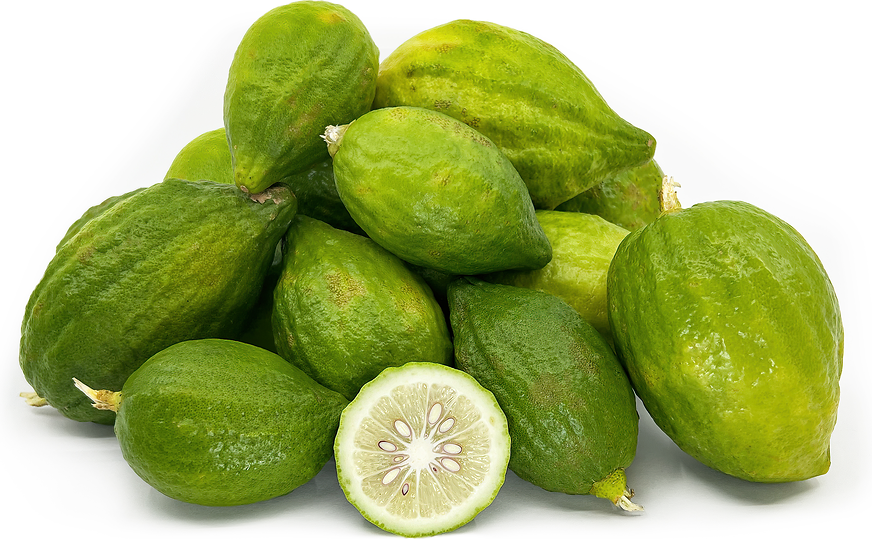


Limau Pagar
Estimated Inventory, lb : 0
Description/Taste
Limau Pagar is small and round to oval in shape, averaging 2-3 centimeters in diameter. When young, the skin is green with slight ridges running lengthwise along the fruit and has many visible oil glands. As the fruit matures, it turns to a golden yellow with smooth and shiny skin. The flesh is pale green to yellow, has multiple segments, and contains small red seeds. Limau Pagar is acidic with sweet and sour notes.
Seasons/Availability
Limau Pagar is available year-round.
Current Facts
Limau Pagar, botanically classified as Fortunella polyandra, is a thornless shrub that is a member of the Rutaceae, or citrus family. Also known as a Malayan kumquat, Marai Kinkan, Nagana Kinkan, Chang Ye Jin Gan, Long-leaves kumquat, Single kumquat, and Hedge lime, Limau Pagar thrives in tropical climates and is mostly used as an ornamental plant in home gardens.
Nutritional Value
Limau Pagar is an excellent source of vitamin C, vitamin A, fiber, and potassium.
Applications
Limau Pagar is best suited for raw and pickled preparations. It can be peeled and eaten fresh or depending on the thickness of the skin some prefer to eat the fruit with the skin on. Limau Pagar is also commonly sold in markets to be dried, preserved, and pickled. Limau Pagar pairs well with poultry, seafood, greens, and as an added citrus flavor in stir-fries and noodle dishes. Limau Pagar will keep up to two weeks when stored in a cool and dry place.
Ethnic/Cultural Info
In Vietnam, the kumquat plant symbolically represents a family’s lineage and is used during the New Year’s festival, Tet. Each part of the plant represents a different generation with the fruits being the grandparents, flowers the parents, and buds the children. It is considered lucky to have both flowers and fruit on the tree, and during the holiday each family places a kumquat tree on their front porch as an ornamental decoration. Many local festivals also take place during this time, and street vendors prepare kumquat wine, candied kumquats, and preserved kumquats to sell in celebration of good fortune.
Geography/History
Limau Pagar is believed to be native to Peninsular Malaysia, but the origins are relatively unknown. Today, Limau Pagar can be found in local markets in Malaysia, Thailand, Vietnam, and China.
Recipe Ideas
Recipes that include Limau Pagar. One
| Delia Online |
|
Pikcled Limes |




